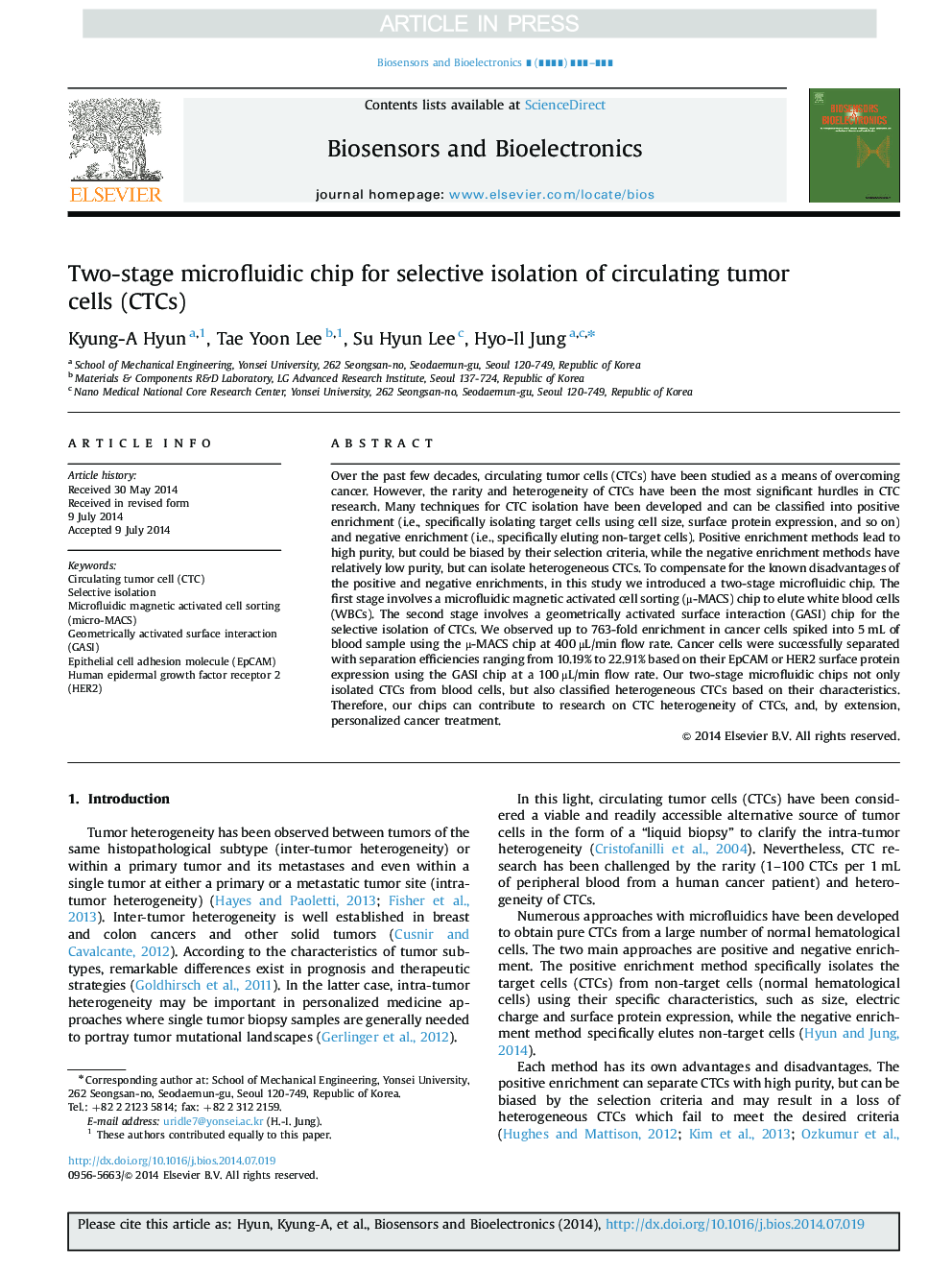| Article ID | Journal | Published Year | Pages | File Type |
|---|---|---|---|---|
| 7232369 | Biosensors and Bioelectronics | 2015 | 7 Pages |
Abstract
Over the past few decades, circulating tumor cells (CTCs) have been studied as a means of overcoming cancer. However, the rarity and heterogeneity of CTCs have been the most significant hurdles in CTC research. Many techniques for CTC isolation have been developed and can be classified into positive enrichment (i.e., specifically isolating target cells using cell size, surface protein expression, and so on) and negative enrichment (i.e., specifically eluting non-target cells). Positive enrichment methods lead to high purity, but could be biased by their selection criteria, while the negative enrichment methods have relatively low purity, but can isolate heterogeneous CTCs. To compensate for the known disadvantages of the positive and negative enrichments, in this study we introduced a two-stage microfluidic chip. The first stage involves a microfluidic magnetic activated cell sorting (μ-MACS) chip to elute white blood cells (WBCs). The second stage involves a geometrically activated surface interaction (GASI) chip for the selective isolation of CTCs. We observed up to 763-fold enrichment in cancer cells spiked into 5 mL of blood sample using the μ-MACS chip at 400 μL/min flow rate. Cancer cells were successfully separated with separation efficiencies ranging from 10.19% to 22.91% based on their EpCAM or HER2 surface protein expression using the GASI chip at a 100 μL/min flow rate. Our two-stage microfluidic chips not only isolated CTCs from blood cells, but also classified heterogeneous CTCs based on their characteristics. Therefore, our chips can contribute to research on CTC heterogeneity of CTCs, and, by extension, personalized cancer treatment.
Keywords
Related Topics
Physical Sciences and Engineering
Chemistry
Analytical Chemistry
Authors
Kyung-A Hyun, Tae Yoon Lee, Su Hyun Lee, Hyo-Il Jung,
